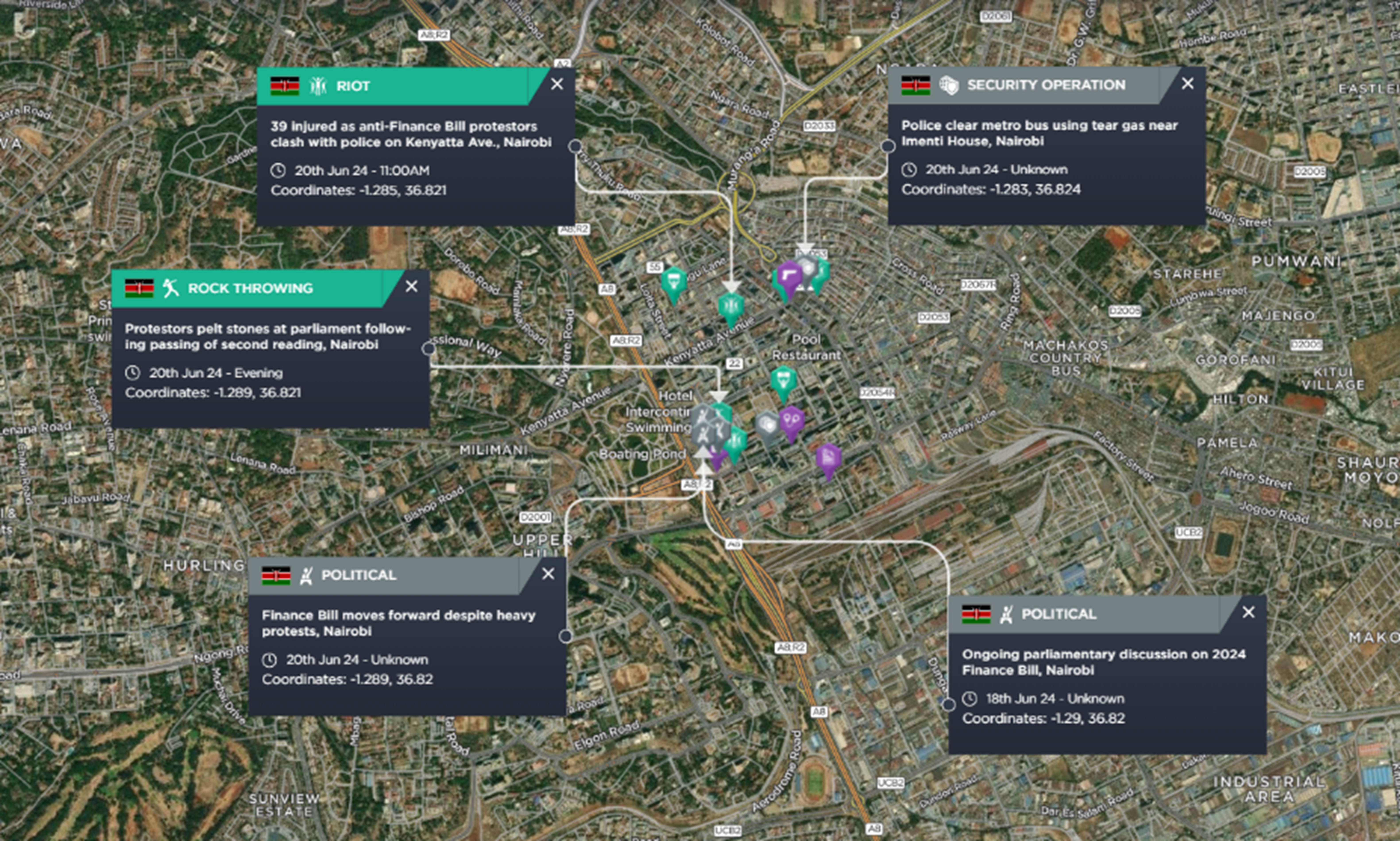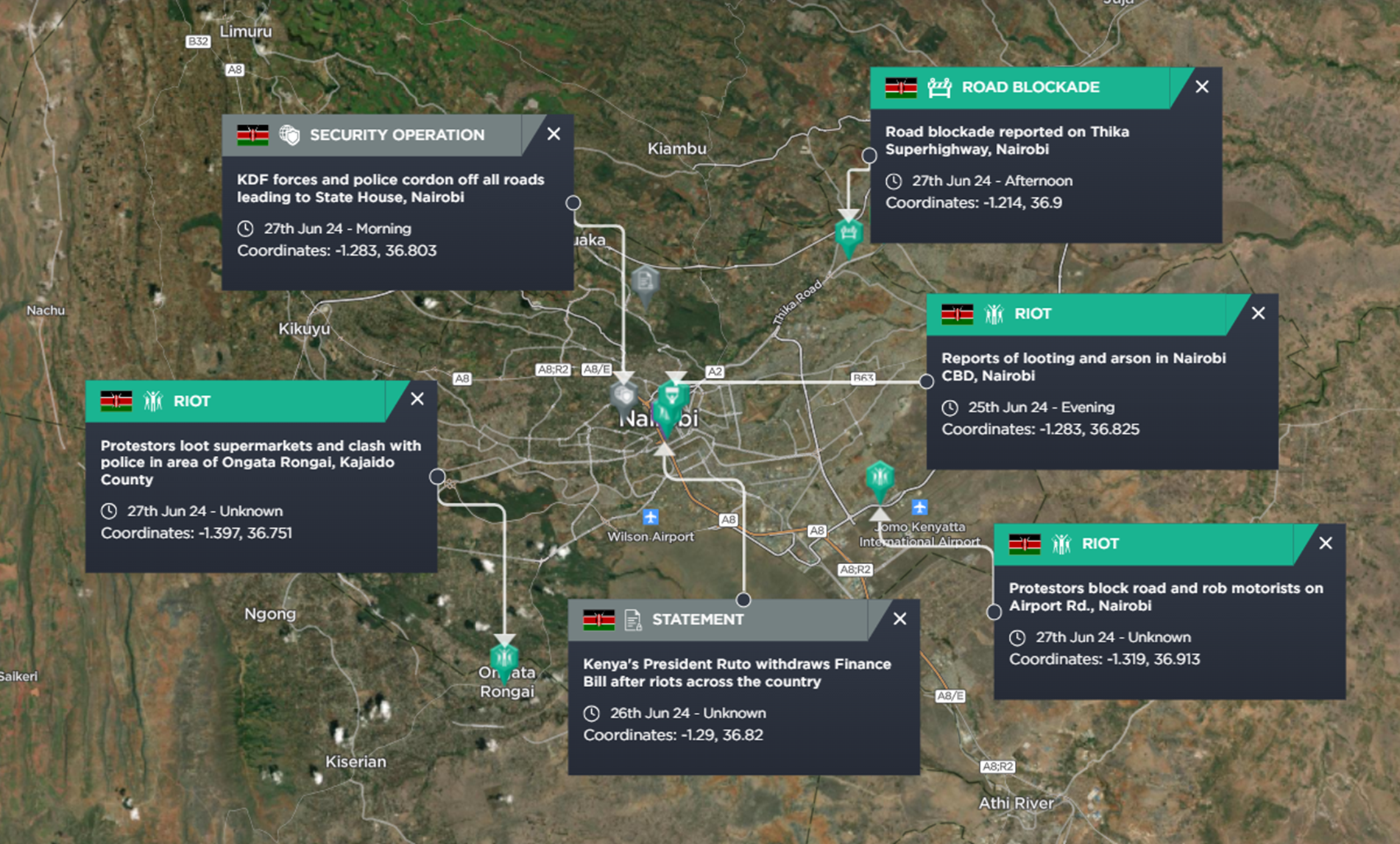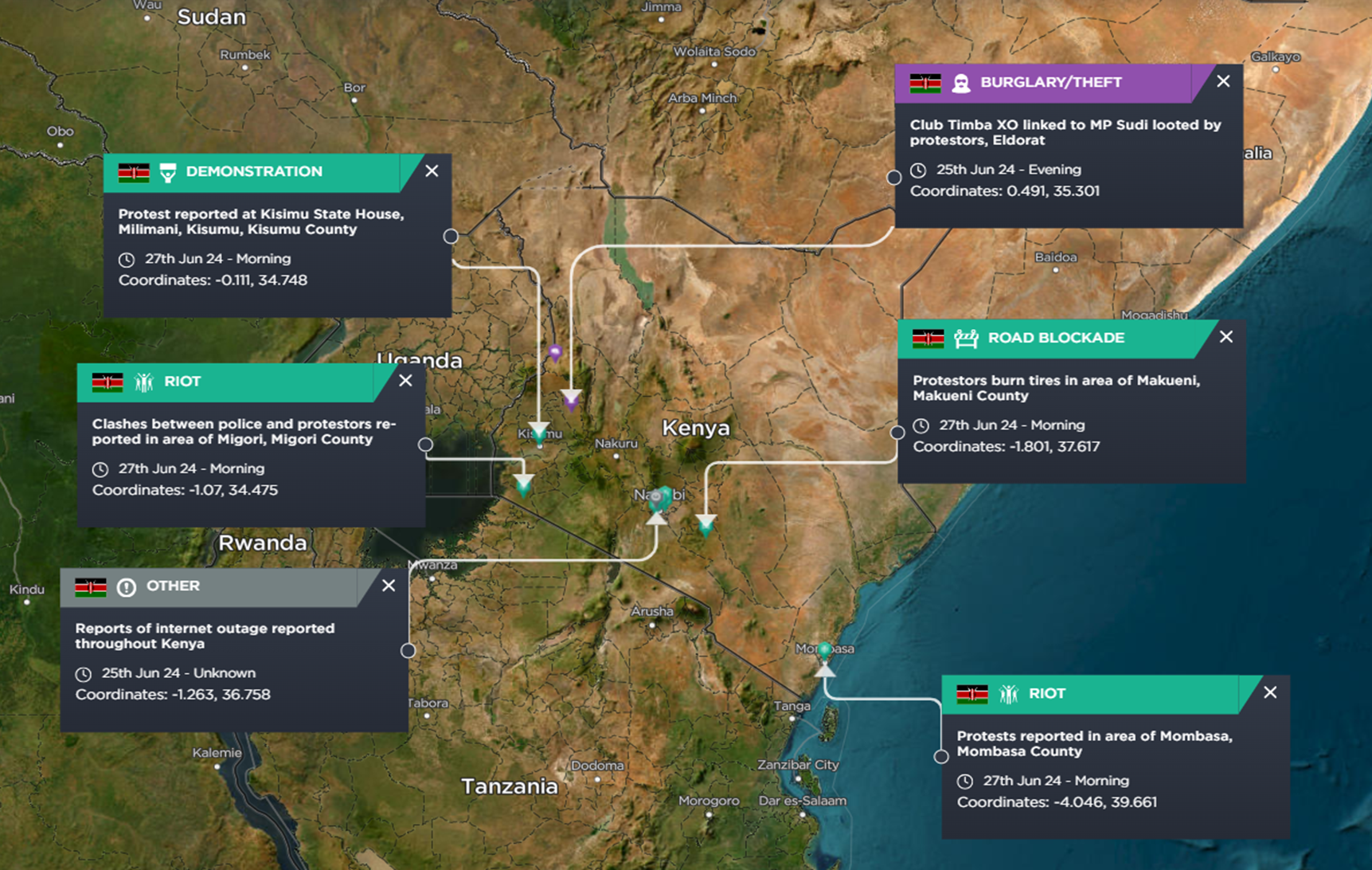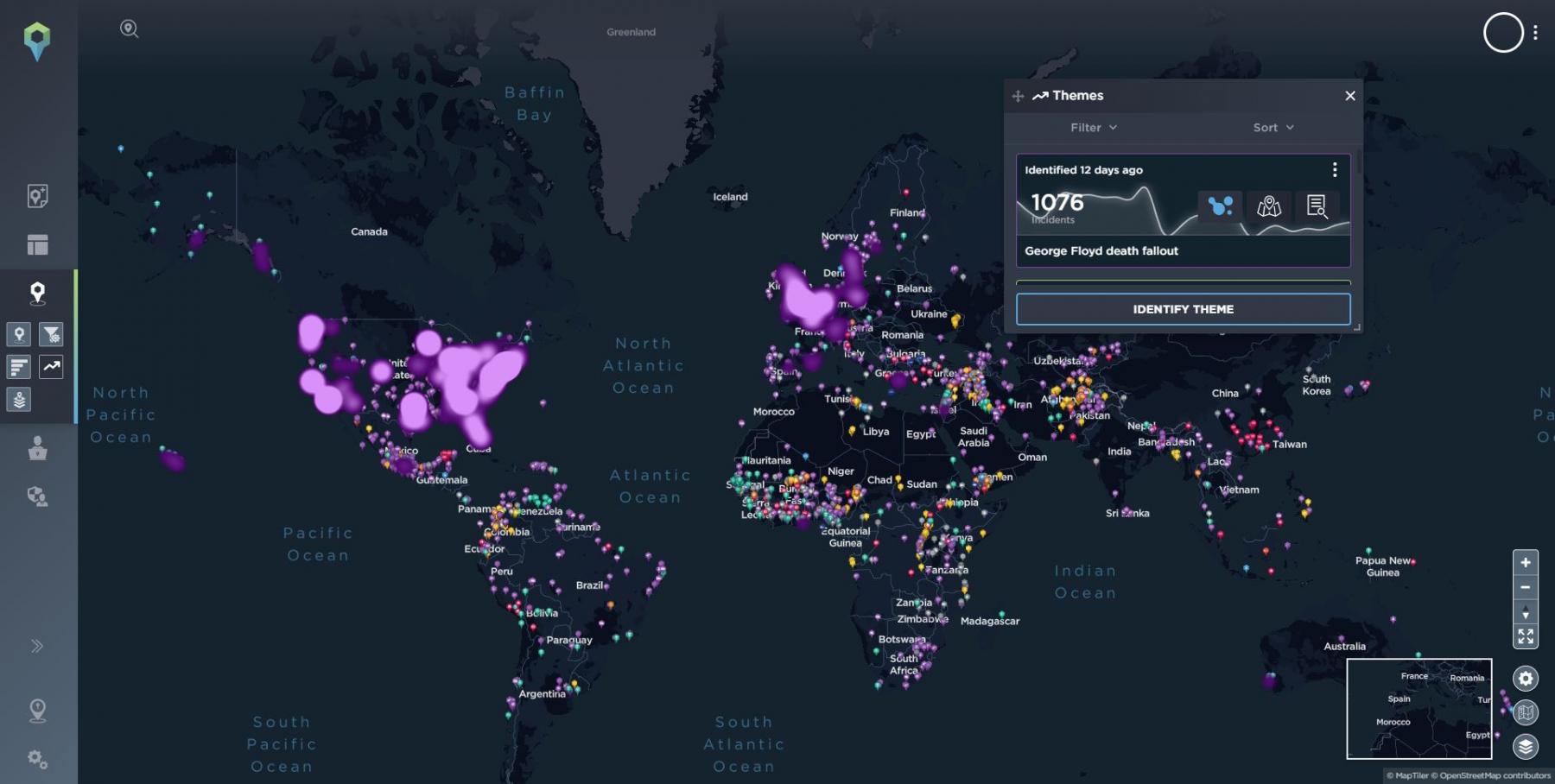Kenya’s Anti-Finance Bill Protests: A Movement Against Economic Inequality and Government Actions
The widespread protests in Kenya were triggered by the 2024 Finance Bill, which proposed tax increases on essential goods. Despite the bill's withdrawal, public discontent with economic inequality and government actions has fueled ongoing demonstrations and unrest across the country.
Overview
- The 2024 Finance Bill proposed tax increases for several essential goods such as bread, sanitary pads and financial services.
- Protests against the bill initially started on social media but soon escalated to the storming of State Houses in several cities across the country.
- Despite the withdrawal of the bill, riots against the current Government have continued.
Background
Despite significant growth in the years preceding the COVID-19 pandemic, Kenya continues to face severe economic inequality and foreign debt, which amounts to nearly USD 80 billion. Approximately 58% of government revenue currently goes into paying off the national debt, leaving budgets for civic development on a shoestring.
Kenyans have expressed anger at the government’s decisions to increase tax rates on several occasions since 2022. The 2023 Finance Bill was met with widespread disapproval, resulting in protests that left six people dead and hundreds injured. On 9th May 2024, the Kenyan government introduced the Finance Bill 2024 to reduce the country’s dependence on borrowing and pay off the national debt. The 2024 bill proposes a further increase in the taxation of several goods and services to cover the deficit. Essential items such as a 16% VAT on bread, financial services, and foreign exchange transactions, a 2.5% increase on motor vehicles, as well as an eco-tax for items with an environmental impact such as sanitary pads, diapers, tyres, plastic packaging, radio equipment, and electronic devices.

Initial reactions to the 2024 Finance Bill [Image source: Intelligence Fusion]
What Has Happened?
Reactions to the bill initially sprung up in the digital sphere, with the hashtag #RejectFinanceBill2024 beginning to trend on TikTok before spreading to X, WhatsApp, and Instagram. As the message spread on social media, protesters descended upon the gates of the Parliament building in Nairobi for a sit-in on 18th June. Originally a peaceful demonstration, it turned violent when police attempting to disperse demonstrators fired live rounds and tear gas shells. Over 200 people were arrested but later released owing to pressure from political leaders and international organisations such as Amnesty International.
The government has since decided to scrap the levies on bread, motor vehicles, sugar, financial services, all previously mentioned eco-taxes, and a clause that allowed the Kenya Revenue Authority to access personal financial records. However, levies on many sectors, such as road maintenance and imported goods, have remained. Protesters, dissatisfied with the proposed concessions, started the hashtag #RejectNotAmend, vowing to get the entire bill scrapped.
In the days that followed, several road blockades and riots occurred across the country, including an incident on 24th June in which several youths interrupted a meeting of MPs in Malava, Kakamega County, and demanded the resignation of those MPs who voted in favour of the finance bill.
Following those days of protests, a nationwide strike was called for 25th June when the bill was to enter the final round of deliberation. On that day, protesters stormed Parliament, entered the Senate chamber and were fired upon by police, reportedly using live rounds, leaving at least five people dead and several wounded. Riots were also seen in the cities of Nakuru, Mombasa, Eldoret, Meru, Lodwar, Kisumu, Nyeri and many others. Local media sources covering the protests, such as the Kenyan Television Network (KTN), were threatened with shutdowns. Internet services were also reported to be disrupted, though they were restored the following day.
The following day, on 26th June, President William Ruto announced that the proposed finance bill was to be revoked, giving in to the week-long protests. However, displeased with the state’s handling of the protests, particularly the detention of hundreds involved with the protests, citizens continued to riot in the streets of Nairobi and other cities the following day. The Kenya National Commission has stated that it secured the release of 300 people illegally detained for their alleged involvement in the protests.
Once again, riot police and tear gas were deployed to prevent rioters from entering the city centre. Roads leading to the State House in Nairobi were barricaded. Chants of “Ruto must go” were heard during protests in Mombasa, where it is reported that several businesses had to close due to instances of looting. Rioting, road blockades, and looting were also reported in Migori, Makueni, and Kisumu.
Road blockades and lootings in Nairobi post the withdrawal of the bill [Image source: Intelligence Fusion]
What's next?
What began as a reaction to the Finance Bill is not turning into a movement to get William Ruto out of office. The withdrawal of the Finance Bill will put President Ruto under more pressure from the International Monetary Fund (IMF) to bring in strict austerity measures, a move that will certainly drive more people to the streets.
Several demonstrators have already stated that they will go ahead with planned demonstrations in the following weeks and will continue until President Ruto has resigned from office. Considering that prominent activists such as Boniface Mwangi have called upon millions to demonstrate, protests and riots can be expected to continue across several cities. The High Court has now approved the government deployment of the Kenya Defence Forces to quell the protests, and more cities will witness a heavy army presence. Mobile and internet services may also be disrupted in several cities. There is a chance of these protests intensifying when the bill returns to Parliament, as has been stated by the President, despite his apparent intention to only do so after thorough consultation with the protesters.
While protests and riots rage across the country, misinformation regarding police response to protests will also be prevalent. For instance, rumours began circulating on 25th June about an alleged killing of over 100 protesters by police in Githurai. This was, however, found to be false by fact-checkers from the BBC. The rumours had spread via social media owing to a video depicting shots being fired into the air and another video of protesters blocking a road being faced with police and military vehicles. The large amount of outrage on social media did nothing to reduce the impact of the allegations. Once referred to as a ‘massacre’ by the Law Society of Kenya, it received more credibility. Victim testimonies given to the BBC revealed that injuries caused during the riot in Githurai were from stray bullets. Since anti-government sentiment and demonstrations are likely to continue, hysteria created by fake news and misinformation will intensify public shows of dissent by the people.





